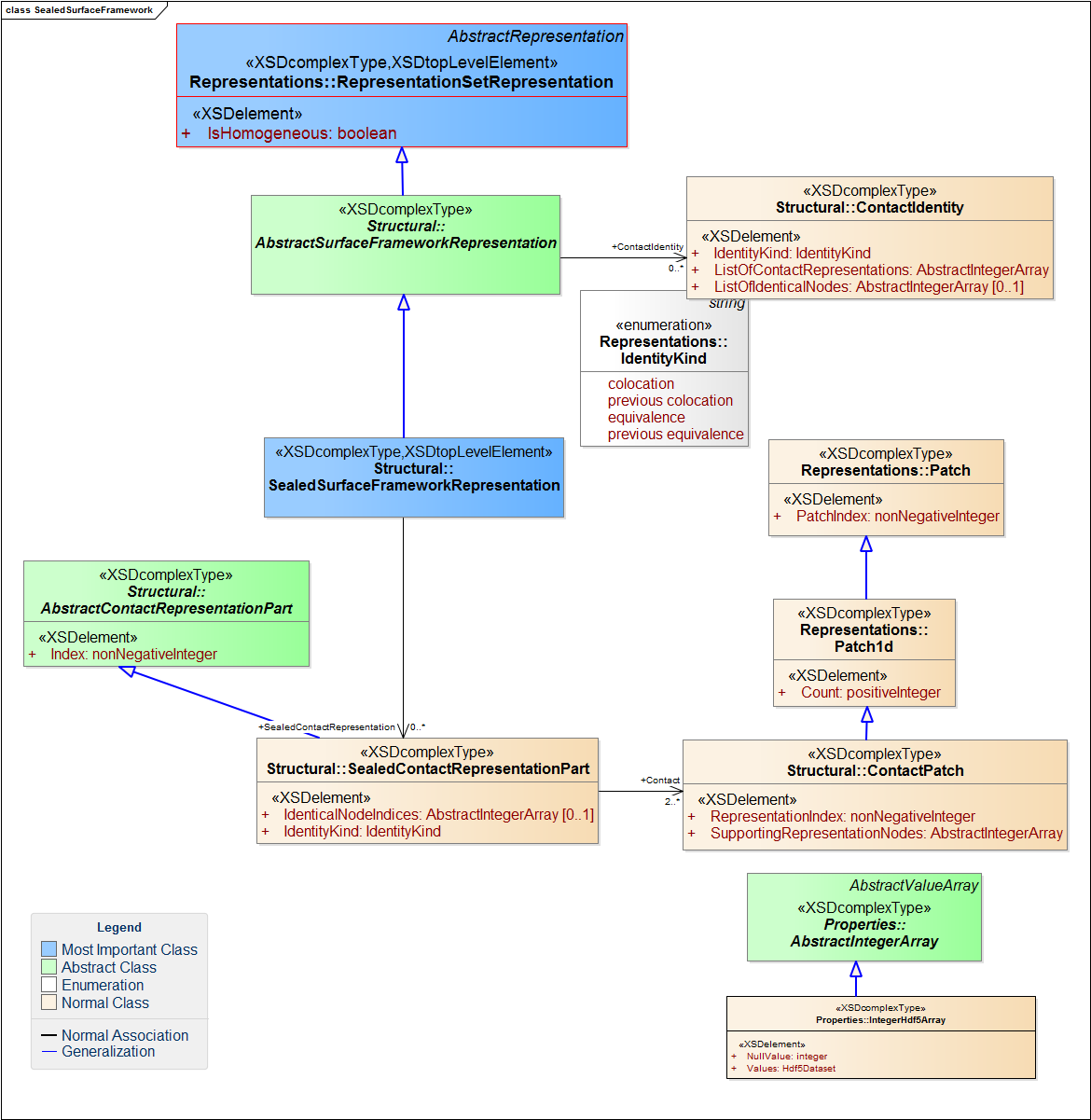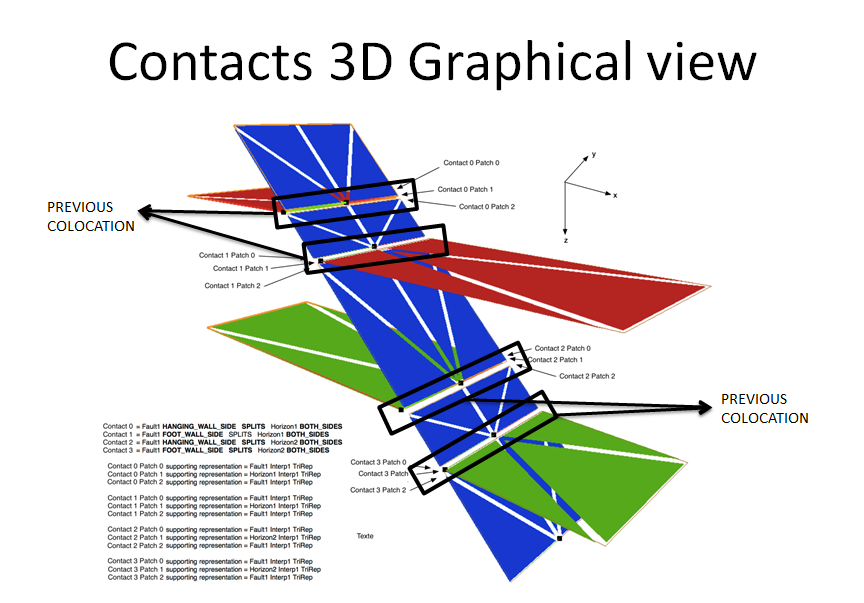10.3.2.2 Sealed Surface Framework Representation
| Topic Version | 1 | Published | 09/11/2015 | |
| For Standard | RESQML v2.0.1 | |||
Figure 10.3.2.2-1 shows a UML model of a sealed surface framework representation. Figure 10.3.2.2-2 ) shows a graphical example of a sealed surface framework.
Use this sealed framework to define a surface representation of a consistent structural organization interpretation. Using this representation as a starting point provides gridding software with a clean topology and geometry framework and avoids inconsistent geometry usage. When several nodes are topologically associated, they have absolutely the same geometry, even if they belong to different representations of “structural objects”. Software can read this information and set up a sealed volume framework representation or a grid representation on this base.
A sealed surface framework representation contains line contact representations (surface/surface contact interpretations between boundaries) and representations of boundary interpretations (horizon, faults, frontiers) and associations between line contact representations (contact identity). These line contact representation are only defined by their topology (node index) into their supporting representation.
Because this sealed surface framework contains only topological information between the involved contacts and individual representations, the geometry of the sealed contact representation part belongs to the supporting representation nodes.
A complete sealed surface framework representation contains a list of representation list elements, a list of sealed contact representation parts (each element of the list having one given index) and a list of contact identities.
To define a sealed contact representation part and contact identity, use the same mechanism as the subrepresentation and (sub)representation identity (see 6.5 Representation Identities ).
A sealed contact representation part associates together two or more contact patches defined by their representation index. These sealed contact representation parts must have an identity kind of “colocated" or "equivalent.” The number of identical node indices associated with a sealed contact representation part indicates which nodes (identified by their common index in all contact patches) of the contact patches are identical. If this list is not present, then it indicates that all nodes in each representation are identical, on an element-by-element level.
A contact identity associates already defined contact patches to add an identity kind ("previously colocated" or "previously equivalent") to this association of contact patches (see 6.5 Representation Identities ).

